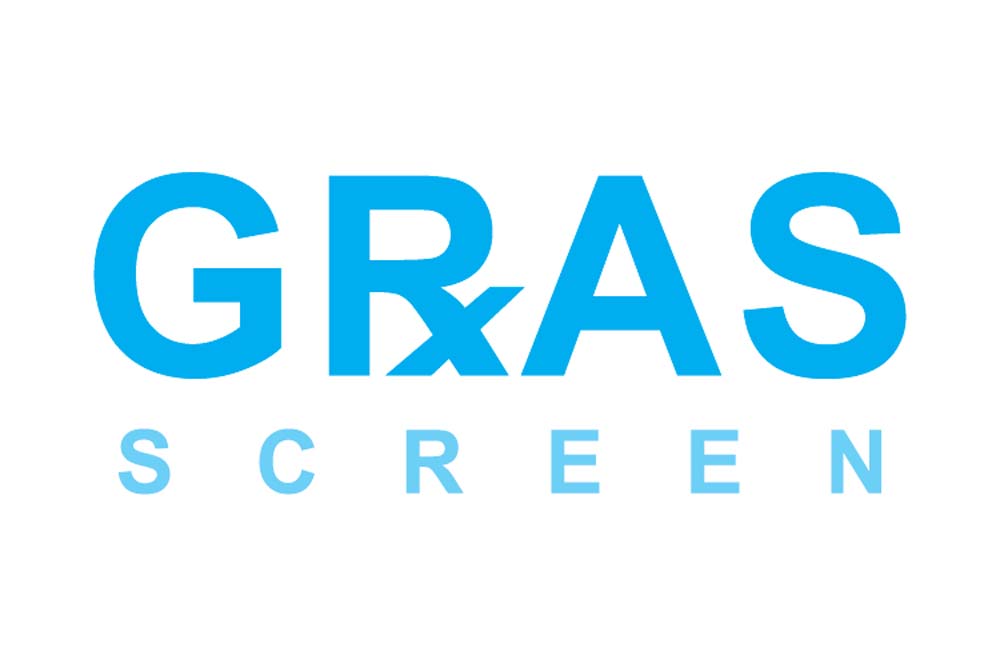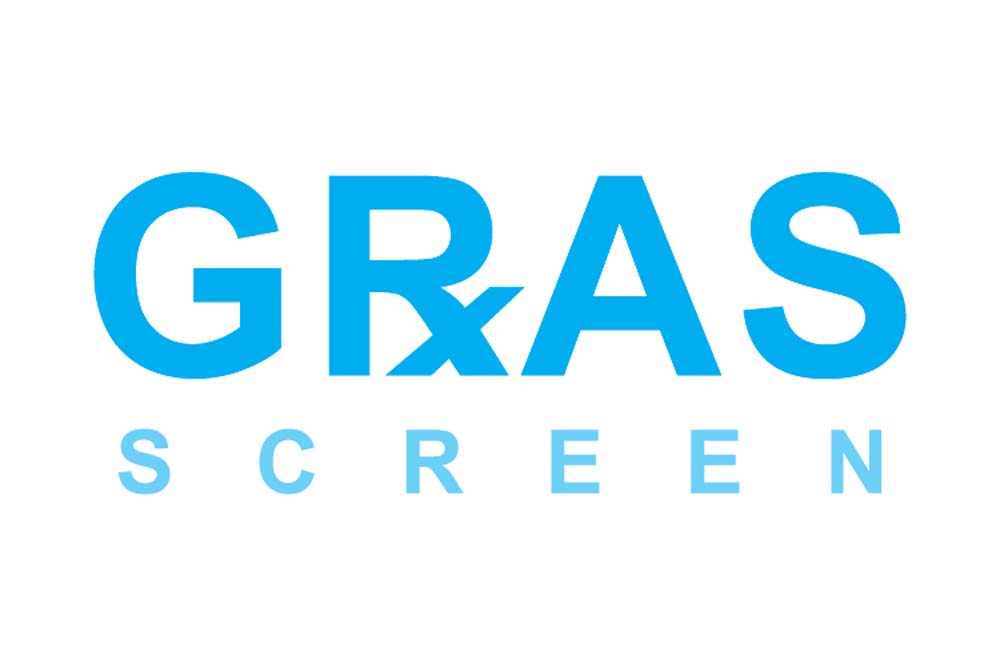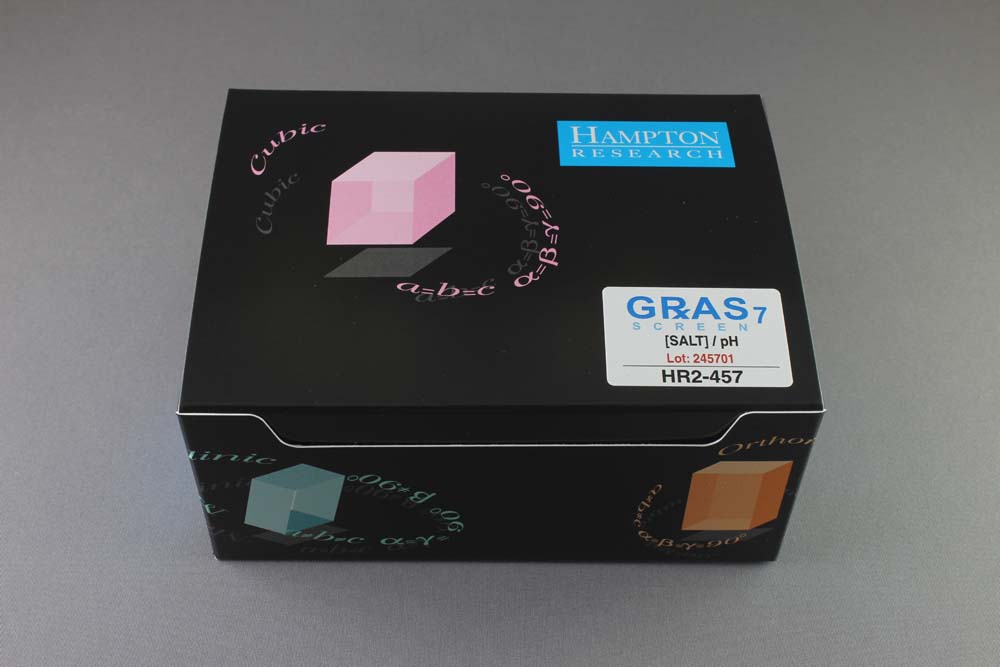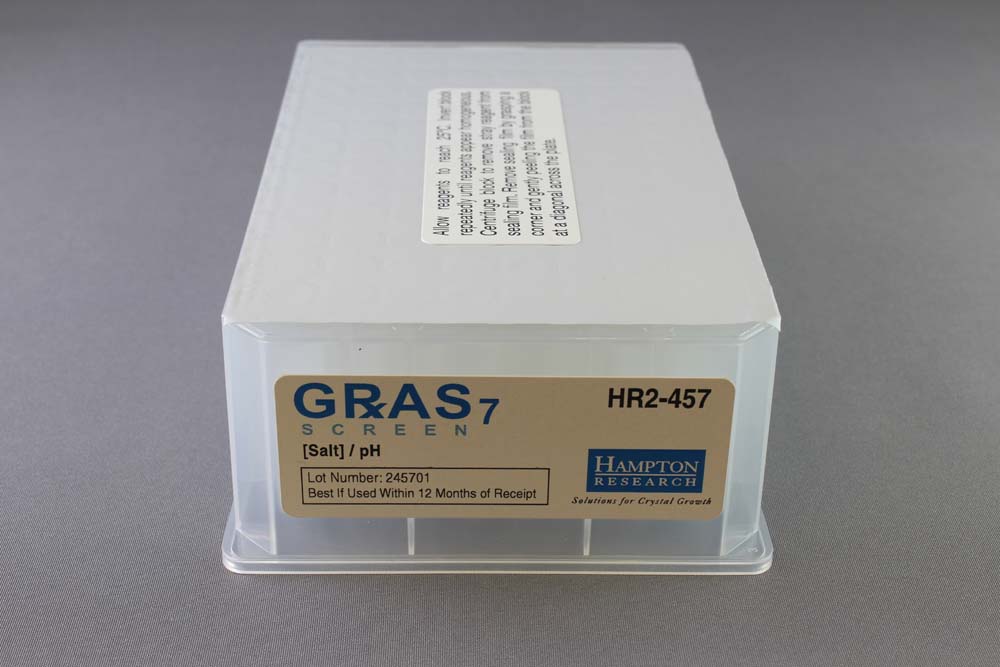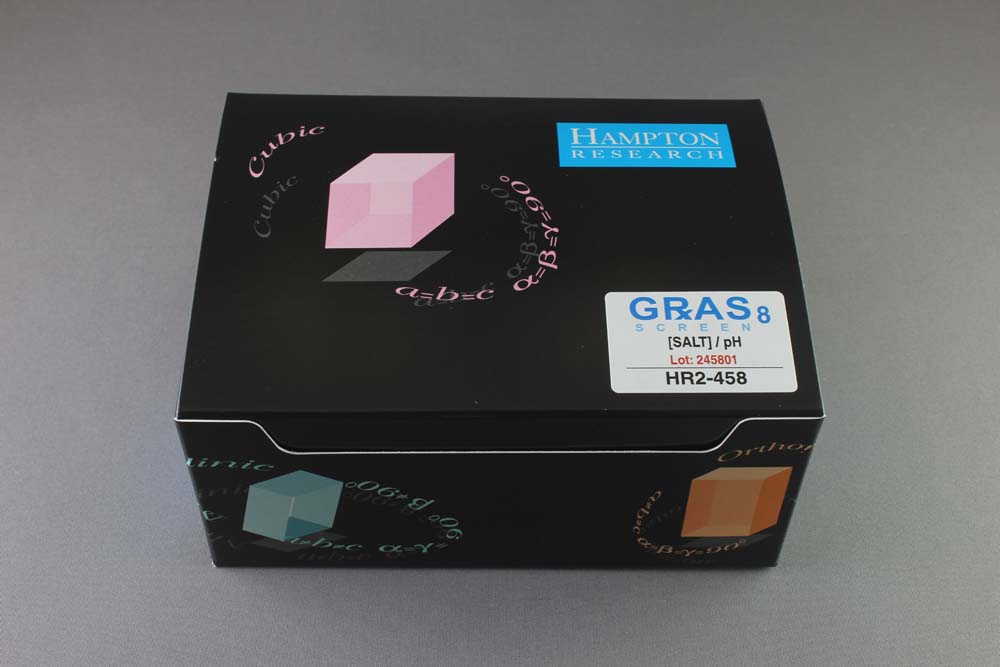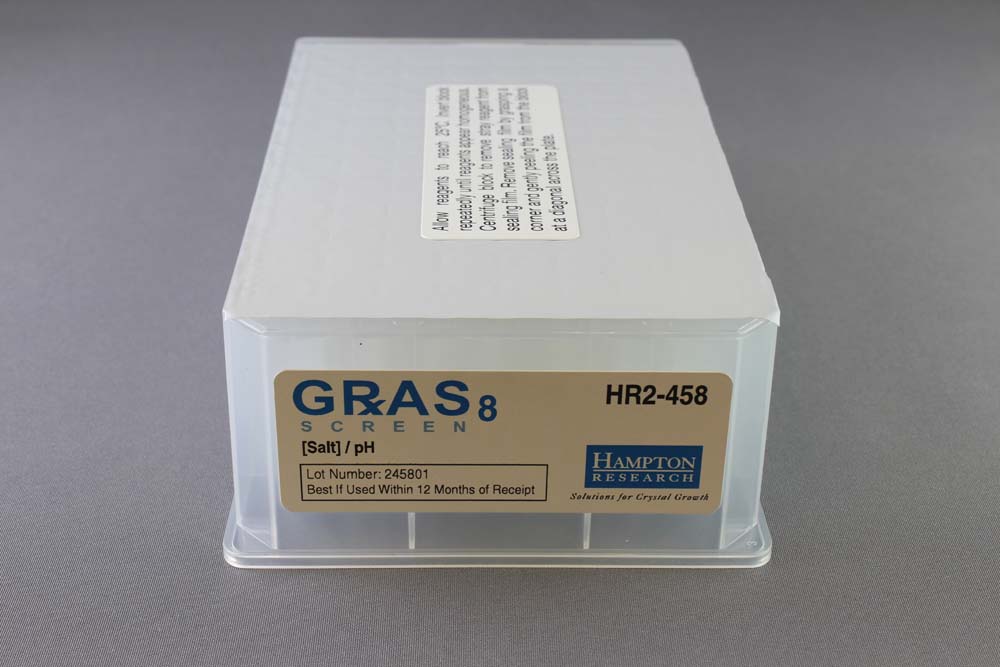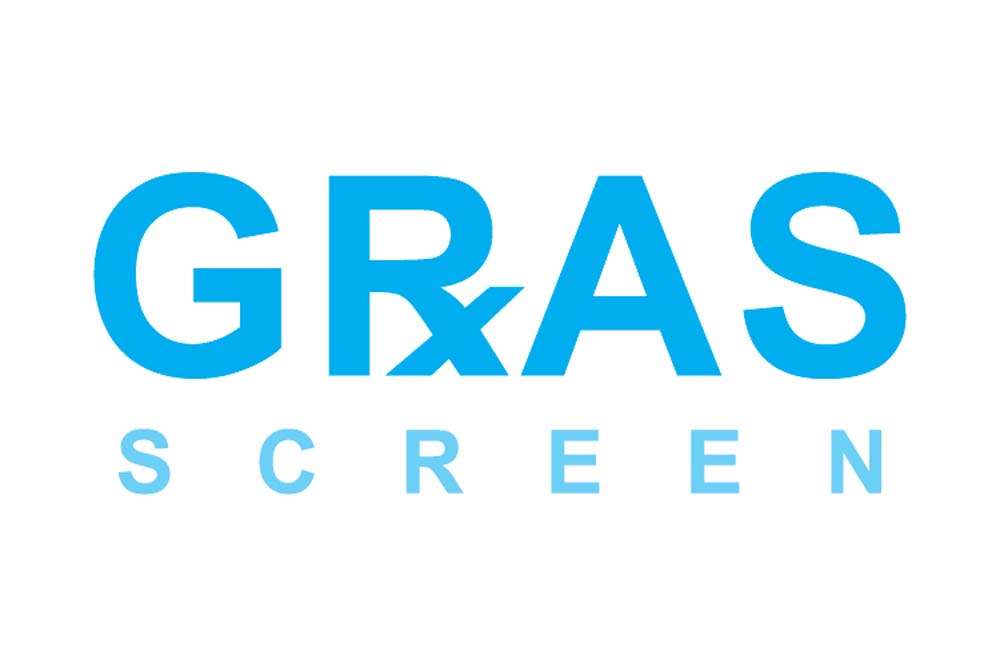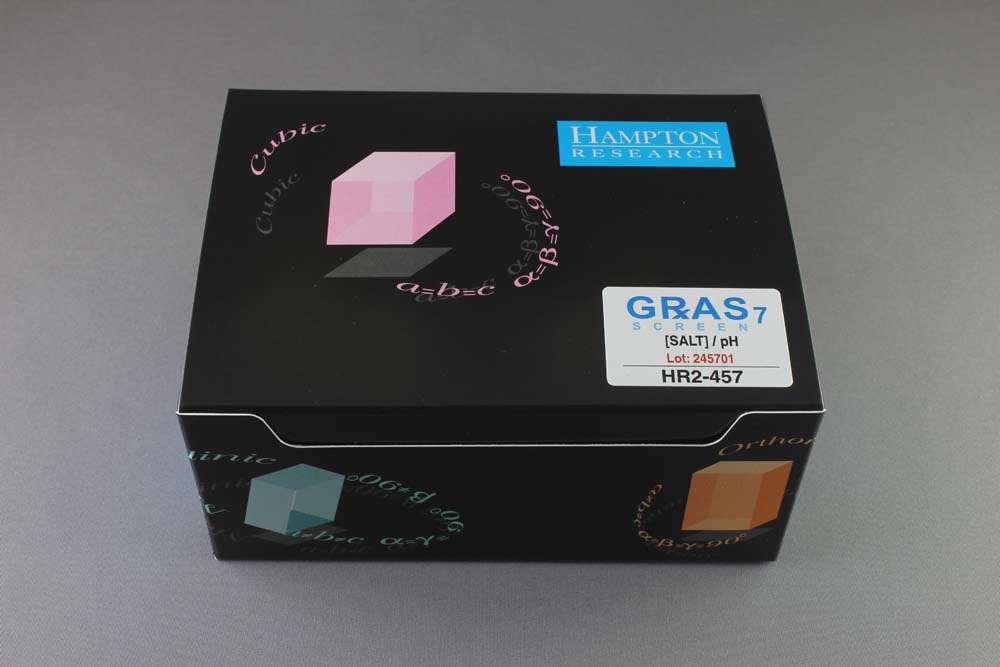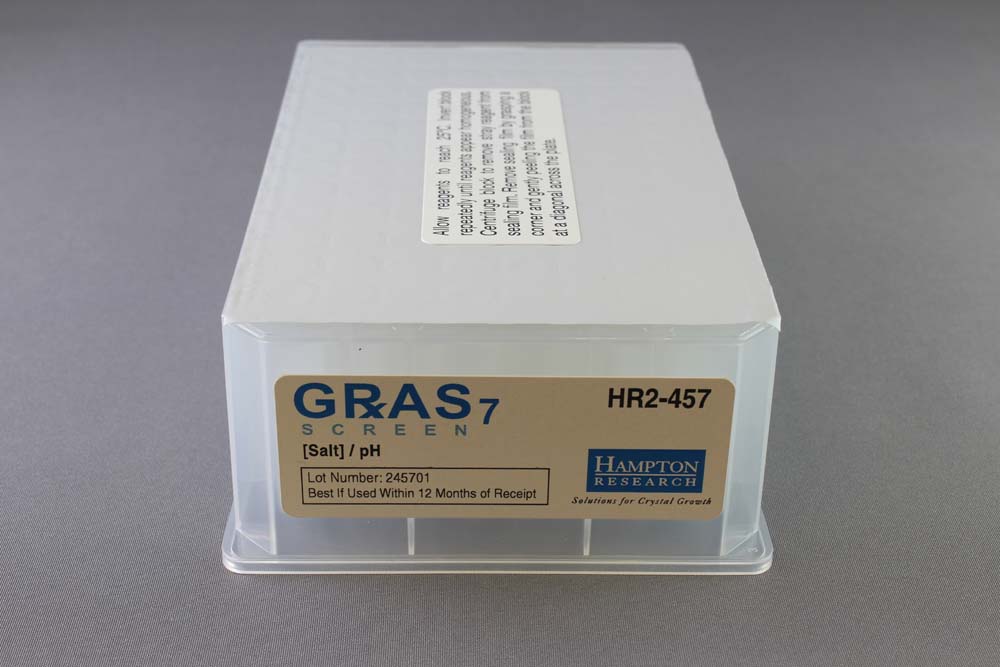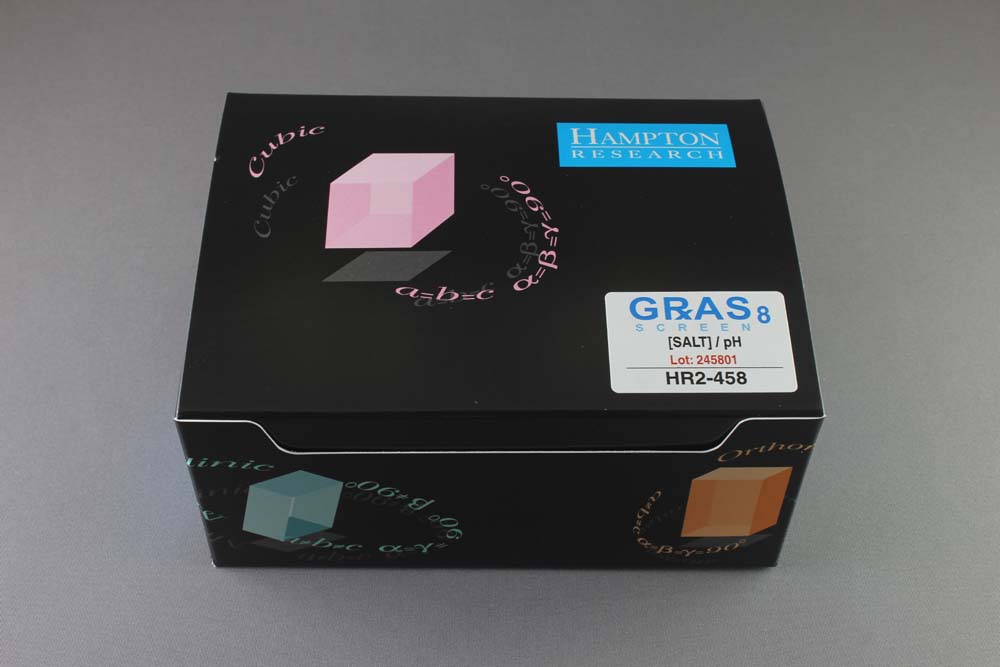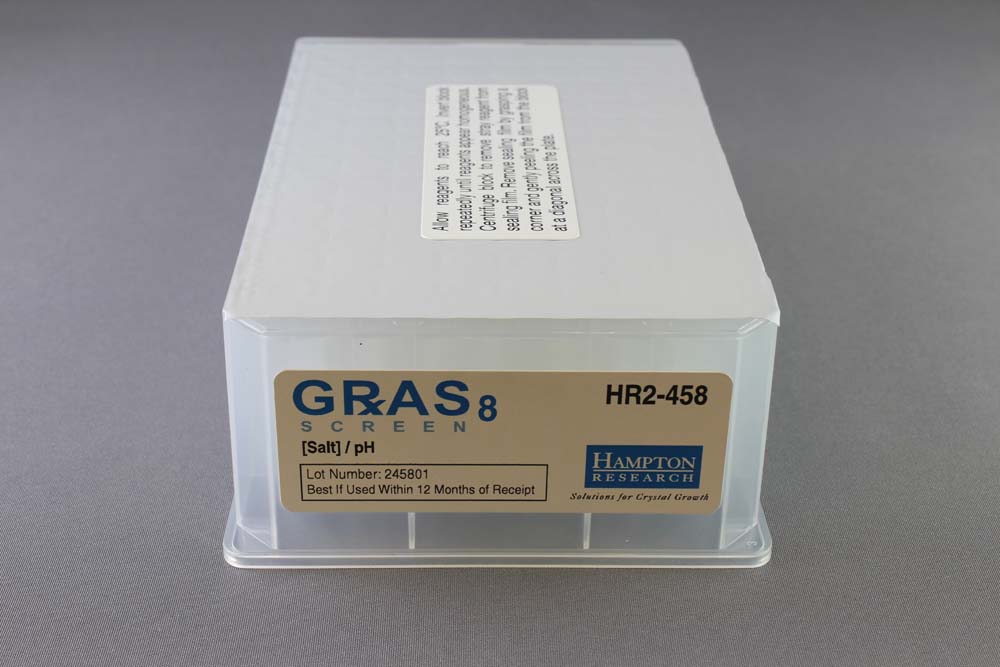Hampton Research蛋白结晶试剂盒






Products > Crystallization Screens > GRAS Screens > GRAS Screen™ 7 • GRAS Screen™ 8
GRAS Screen™ 7 • GRAS Screen™ 8
Applications
- GRAS reagent crystallization screen for proteins, including monoclonal antibodies, where Salt is the primary reagent, sampling pH 4.5 to 10.
- Identify GRAS based reagents that promote crystallization of biotherapeutics for bioprocess, bioformulation, and continuous flow manufacturing applications.
Features
- Developed at Hampton Research
- Generally Recognized As Safe reagent formulation
- Samples pH 4.5 to 10; 8 unique buffers
- Primary crystallization reagent:
- GRAS 7: Ammonium – acetate, chloride, citrate, formate, phosphate, sulfate, tartrate, Potassium phosphate, & Sodium acetate
- GRAS 8: Sodium – chloride, citrate, formate, phosphate & tartrate
- Vapor diffusion, microbatch, free interface diffusion
- Reagents soluble between 4°C and 30°C
- Antibody crystallization screen
Description
GRAS Screen™ 7 and 8 were developed by Hampton Research for the crystallization of proteins, including monoclonal antibodies.
Each of the chemicals in GRAS Screen 7 and 8 has been used under one or more of the following categories. As (1) a Generally Recognized As Safe (GRAS) substance, (2) a pharmaceutical excipient, (3) a normal physiological constituent, (4) a metabolic byproduct, and/or (5) a Everything Added to Food in the United States (EAFUS) substance.
GRAS Screen 7 samples 9 salts (Ammonium-acetate, chloride, citrate, formate, phosphate, sulfate, tartrate, Potassium phosphate, & Sodium acetate) at 4 concentrations, sampling 8 unique buffers (pH 4.5 to 10.0) as well as 8 buffer controls without salt. GRAS Screen 7 is supplied in a 96 Deep Well block format and is compatible with robotic and multi-channel pipet liquid handling systems. GRAS Screen 7 is compatible with vapor diffusion, free interface diffusion, and microbatch crystallization methods. For research use only.
GRAS Screen 8 samples 5 salts (Sodium – chloride, citrate, formate, phosphate & tartrate) at 4 concentrations, sampling 8 unique buffers (pH 4.5 to 10.0). GRAS Screen 8 is supplied in a 96 Deep Well block format and is compatible with robotic and multi-channel pipet liquid handling systems. GRAS Screen 8 is compatible with vapor diffusion, free interface diffusion, and microbatch crystallization methods. For research use only.
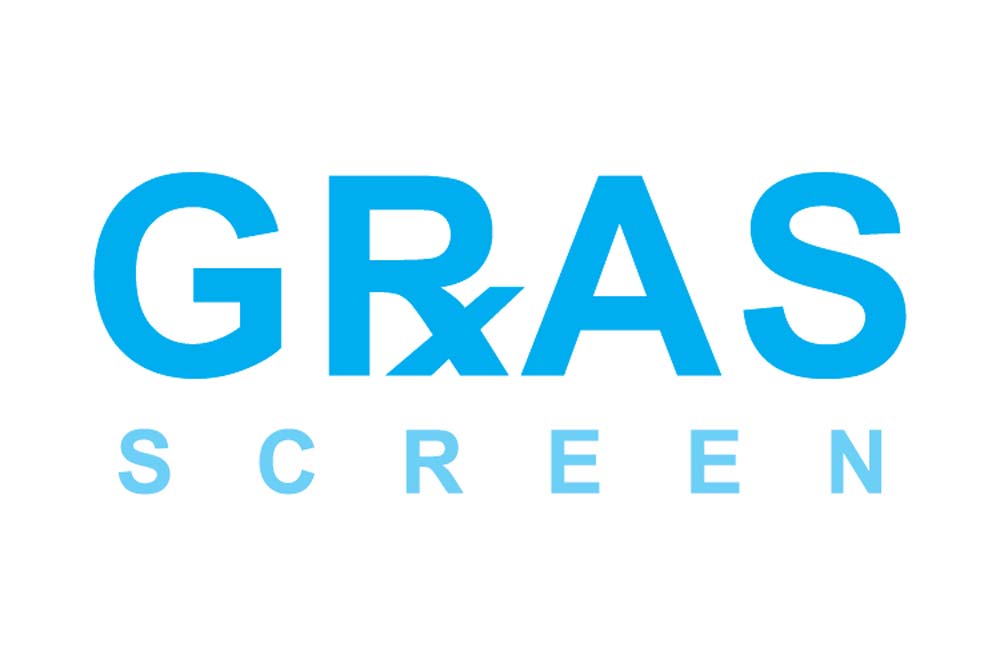
Click to Zoom In
CAT NO
HR2-457
NAME
DESCRIPTION
1 ml, Deep Well block format
PRICE
$161.00
cart quote
CAT NO
HR2-458
NAME
DESCRIPTION
1 ml, Deep Well block format
PRICE
$161.00
cart quote
Support Material(s)
 HR2-457 GRAS Screen 7 Documents
HR2-457 GRAS Screen 7 Documents HR2-457 GRAS Screen 7 SDS
HR2-457 GRAS Screen 7 SDS HR2-458 GRAS Screen 8 Documents
HR2-458 GRAS Screen 8 Documents HR2-458 GRAS Screen 8 SDS
HR2-458 GRAS Screen 8 SDS GRAS Screen 7 & GRAS Screen 8 Formulation & Scoring Data
GRAS Screen 7 & GRAS Screen 8 Formulation & Scoring Data Related Item(S)
- Individual GRAS Screen 7 Reagents
- Individual GRAS Screen 8 Reagents
References
1. Optimization of crystallization conditions for biological macromolecules. Alexander McPherson and Bob Cudney. Acta Crystallographica Section F Volume 70, Issue 11, pages 1445-1467, November 2014.
2. Crystallization of intact monoclonal antibodies. Harris LJ, Skaletsky E, McPherson A. Proteins. 1995 Oct;23(2):285-9.
3. Crystalline monoclonal antibodies for subcutaneous delivery. Yang MX1, Shenoy B, Disttler M, Patel R, McGrath M, Pechenov S, Margolin AL. Proc Natl Acad Sci U S A. 2003 Jun 10;100(12):6934-9.
4. Fast and Scalable Purification of a Therapeutic Full-Length Antibody Based on Process Crystallization. Dariusch Hekmat et al, Biotechnology and Bioengineering, Vol. 110, No. 9, September, 2013.
5. Towards Protein Crystallization as a Process Step in Downstream Processing of Therapeutic Antibodies: Screening and Optimization at Microbatch Scale. Yuguo Zang et al, PLoS One. 2011; 6(9): e25282.
6. Crystallization as a tool for bioseparation. Bob Cudney, Am Biotechnol Lab. 1994 Jun;12(7):42.
7. Large-scale crystallization of proteins for purification and formulation. Hekmat D. Bioprocess Biosyst Eng. 2015 Jul;38(7):1209-31. doi: 10.1007/s00449-015-1374-y
8. Using X-Ray Crystallography to Simplify and Accelerate Biologics Drug Development. Brader ML, Baker EN, Dunn MF, Laue TM, Carpenter JF. J Pharm Sci. 2017 Feb;106(2):477-494. doi: 10.1016/j.xphs.2016.10.017.
9. Excipients and Their Role in Approved Injectable Products: Current Usage and Future Directions. Sandeep Nema and Ronald J. Brendell, PDA J Pharm Sci and Tech 2011, 65 287-332.


Hampton Research, first in crystallization since 1991, developing and delivering crystallization and optimization screens, reagents, plates, and other tools for the crystallization of biological macromolecules, including proteins (antibody), peptides (insulin), and nucleic acids (DNA).
- Products
- Gallery
- My Account
|
|
|
- Contact Us
- Quick Order
- Support
|
- Privacy Policy
- Terms and Conditions
|
- Products
- Gallery
- My Account
- Support
- Contact Us
- Quick Order
- Privacy Policy
- Terms and Conditions
|
|
|
|
|
|
|
© 2022 HAMPTON RESEARCH CORP.
| Website by Skyhound Internet


